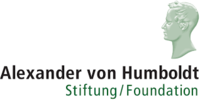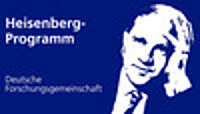Research
Our research is centered around the problem of Quantum Gravity, but spans a large number of topics related to it, in mathematical/theoretical physics, foundations and philosophy of physics, up to philosophy of science more generally.
By combining the main lesson of GR (space, time and geometry are identified with the gravitational field, and are dynamical, physical entities) with the main lesson of Quantum Mechanics (all physical systems possess quantum properties: irreducible uncertainty, probabilistic nature of physical observations, entanglement, contextuality), we expect that spacetime should possess a similar quantum nature. However, this very possibility raises a number of conceptual and technical difficulties of the most profound nature, which we have not overcome fully, yet.
The result is that we lack a framework to describe physical situations featuring both strong gravitational fields and quantum fields. One example of such physical regimes is the very early universe, despite the existing models accounting for the growing amount of cosmological data (e.g. the CMB spectrum of cosmological perturbations). In fact, these cosmological models rely on approximate semi-classical tools and make assumptions about extreme physical regimes that only a full quantum gravity theory could justify (or replace). Another example is the physics of black holes, in particular their interior and microscopic structure, and the way they process information.
In addition, lacking a more fundamental theory of quantum gravity, a number of other aspects of spacetime remains somewhat mysterious, also at large scales and for weak gravitational fields: the thermodynamic properties of horizons, and possibly of more general spacetime regions, or the nature of the cosmological constant and of dark energy, to name a few. Our research aims at providing answers, first of all, to these physical questions.
The landscape of quantum gravity approaches is diversified. This diversity allows to tackle the quantum gravity problem from complementary perspectives, and it is important to look for general lessons and techniques cutting across different approaches. This is a key aspect of our research.
The main attitude towards the problem of quantum gravity has been for many years to see quantum gravity as the straightforward quantization of General Relativity and this has led to valuable results. Still, a change in perspective has taken place over the last years, and the problem of quantum gravity is now understood in a more radical way. The first drivers of this change have been many results in black hole and spacetime thermodynamics, strongly suggesting some underlying discrete, non-geometric (thus not directly “gravitational”) microstructure. Indeed, different quantum gravity formalisms have either identified explicitly or strongly suggested a set of fundamental degrees of freedom which are not simply quantised continuum fields, nor characterised in continuum spatiotemporal manner. Therefore, at the fundamental level, spacetime 'dissolves' into a new set of quantum entities (“atoms of space”), of no direct gravitational, spatiotemporal or geometric interpretation, and from which it has to emerge (alongside the usual notion of geometry, gravity and matter fields), in suitable approximations.
Thus, a theory of quantum gravity should identify the properties of the fundamental non-spatiotemporal entities that give rise, in a suitable approximation, to the notions of locality, Lorentz symmetry and unitarity on which Quantum Field Theory, and all of modern physics, is based; and it should then characterize precisely their limits of validity, since they will be shown to be approximate notions only. We need to reconsider the very foundations of physics.
At a more conceptual level, then, quantum gravity inevitably raises a large number of profound issues, having to do with the very foundations of physics as well as with philosophy. Revising our understanding of space and time themselves means questioning the very basic infrastructure of our understanding of the physical world, with both metaphysical and epistemological implications. The use of quantum mechanics in such exotic context cannot proceed without reconsidering the already thorny issues related to its interpretation. These issues, together with the necessity to question the nature of spacetime itself, and with other peculiarities of quantum gravity research, like the paucity of observational constraints or the very abstract nature of the candidate fundamental constituents of the world, lead to reconsider from a new perspective many aspects of the foundations of physics and, beyond, of philosophy of science. They include for example the role of observers and agents in physics, the nature of physical laws themselves, the role of abstraction in scientific thinking, the issue of theory assessment and theory change, the most appropriate form of scientific realism.
Our research tackles also these more conceptual challenges.
We work on several quantum gravity formalisms (including lattice gravity and non-commutative geometry), with a special focus on tensorial group field theories, but also on the closely related loop quantum gravity and spin foam models.
Tensorial Group field theories (TGFTs) are QFTs for the dynamics of fundamental building blocks of space, pictured as polyhedra, such that: a) their discrete geometry is encoded in group-theoretic data, b) their many-body states correspond to polyhedral complexes, c) their interaction processes are “gluing processes” producing cellular complexes of one dimension higher. They are the convergence of random tensor models, a higher dimensional generalisation of matrix models for 2d quantum gravity and string theory, retaining the same purely combinatorial nature, and of group field theories, which had been developed mostly in connection with loop quantum gravity and spin foam models as a field-theoretic reformulation of their quantum geometry. Thanks to these strict connections to loop quantum gravity, spin foam models and lattice gravity, results in the TGFT formalism can directly impact in these other quantum gravity approaches, and viceversa.
Our research relies on methods of random tensors to control the topological structures generated by TGFTs, with the additional group data allowing a richer (quantum) geometric interpretation. In fact, their quantum states can be understood as generalised tensor networks, as used in quantum many-body systems, with room for applying to them ideas and techniques from quantum information. Therefore, also thanks to the features of the TGFT formalism, we tackle problems in quantum gravity, and in particular the emergence of continuum spacetime physics, using QFT methods and ideas from condensed matter physics and quantum information (e.g. tensor networks and the theory of quantum liquids) in a very direct way, since they describe the universe as a (peculiar) quantum many-body system.









![COST action (CA18108) - EU - “Quantum Gravity Phenomenology in the multi-messenger approach [QG-MM]”](../logo-bilder/cost-action.jpeg)




